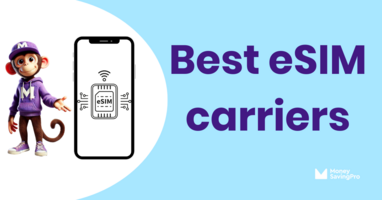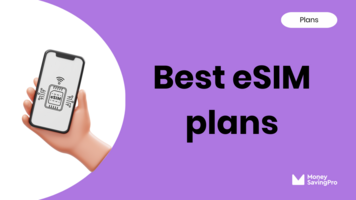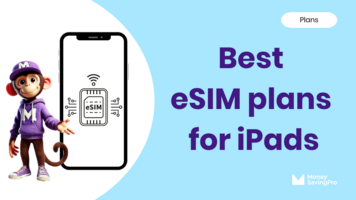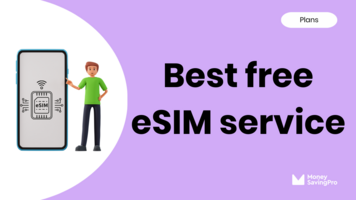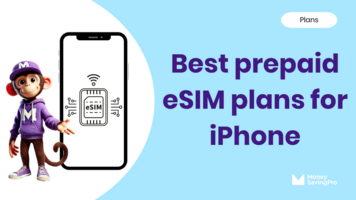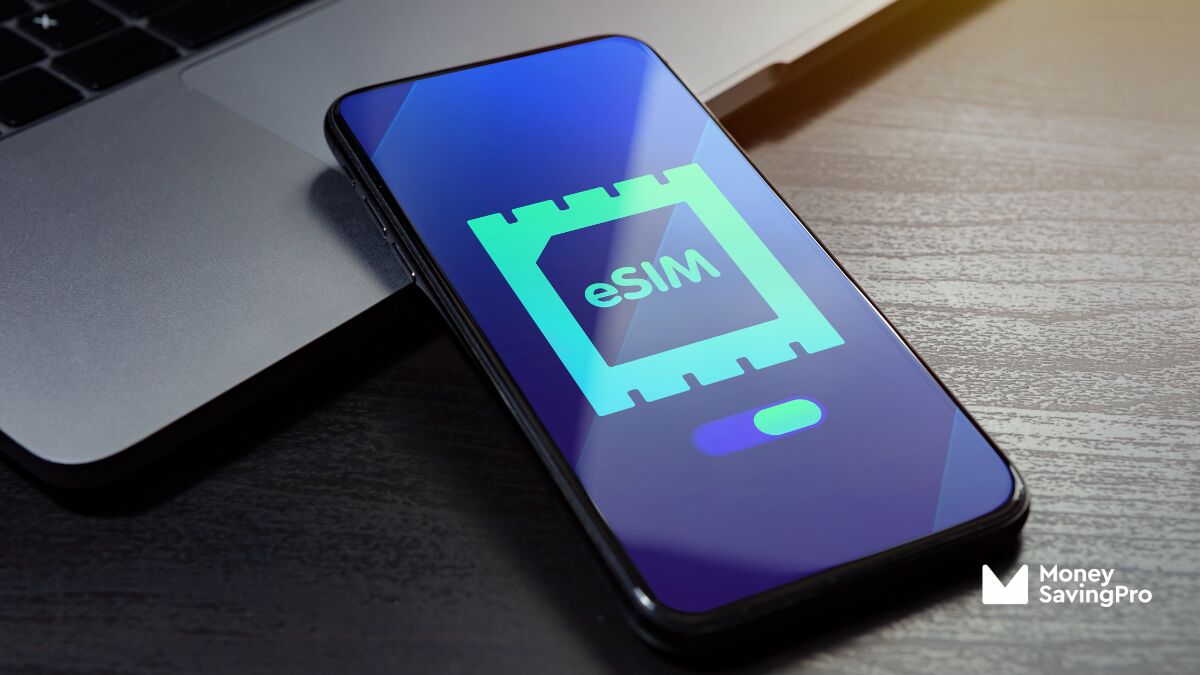
SIM cards. We've all seen and used them inside our phones, but have you ever taken a moment to appreciate just how much they allow us access?
So what exactly is an eSIM?
In short, an eSIM is a revolutionary way to keep connected – it's an embedded SIM card that eliminates the hassle of having to switch physical SIM cards when changing cell phone plans.
In this guide, we discuss everything eSIM, to help you discover more and decide if an eSIM will work for you.
Traditional SIM card vs. eSIM
An eSIM is a virtual revolution.
With no physical SIM cards and just the power of activation, you can easily join any cellular network.
Unlike traditional SIM cards, which are physically removable, an eSIM's embedded into the device's hardware. Although this means it can't be removed, the good news is that means no more having to find the SIM key or a paper clip to unfold!
How does an eSIM work?
Let's delve into the functionality of an eSIM.
With an eSIM, you can think of it more like a digital SIM card. There's no need to seek out a low-cost carrier and wait for your SIM card to arrive to change your cell phone plan.
You can just simply compare the best eSIM carriers online and then buy and download your eSIM plan, and you're instantly connected to that carrier's network.
Advantages of an eSIM
1: Flexibility & convenience
A variety of low-cost carriers support eSIM. This makes it faster and easier to change wireless carriers since you don't have to swap out the SIM card physically.
Plus, if you have a phone that offers dual SIM support, an eSIM is a great way to try a new low-cost carrier without having to cancel your current contract. So you can use two numbers on the same device and make sure you're happy with your new service before canceling your old one.
With an eSIM, users can simply download the necessary mobile data from their new provider and activate it through the settings app on their phone.
2: Save time & money
You no longer need to visit a store or wait for your SIM card to arrive in the mail. You can choose a prepaid eSIM plan online from an MVNO (Mobile Virtual Network Operator), which can save you up to $700 a year on your cell phone bill.
eSIMs can also be useful if you're a frequent traveler, allowing you to switch between a local network to avoid paying roaming fees.
Once you've picked your plan, the carrier normally sends a QR code for you to scan, and you'll have your plan live within minutes.
3: Compact
An eSIM takes up less space than a physical SIM card.
This works well in small devices such as smartwatches, like an Apple watch, or other wearables, where space is limited. In fact, they've been used in these smaller devices for many years.
4: Security
Since an eSIM cannot be removed from the device and is protected by encryption, they tend to be more secure than a physical SIM.
Disadvantages of an eSIM
It's clear that there are plenty of advantages to using an eSIM, but there're also some disadvantages to be aware of:
1: Support
eSIM technology's not as widely supported as traditional SIM cards. So not all devices support eSIMs yet. However, if you have a newer phone, it may be an eSIM-compatible phone or a dual SIM phone.
2: Widespread use
As a growing technology, this means that not all low-cost carriers support eSIMs, and some countries may not have eSIM capabilities.
3: Unfamiliar system
Switching mobile network providers with an eSIM can sometimes be more of an unfamiliar process than swapping a traditional SIM card.
You may need to navigate through different menus and phone settings to activate your eSIM device, which can be confusing. But most carriers offer eSIM support and easy-to-follow activation steps to help with the process.
What devices support eSIMs?
Many modern smartphones, tablets, and smartwatches now use eSIMs.
Some of the most popular devices that support eSIMs include the iPhone XS, iPhone XR, iPhone 11, iPhone 12, and iPad Pro. When Apple released the iPhone 14 models, these were the first cell phones to support eSIM only. So there is no physical SIM card slot, but there's a range of iPhone 14 eSIM plans to choose from.
Also, Android phone devices such as Google Pixel 3, Google Pixel 4, Samsung Galaxy S20, and Samsung Galaxy Watch can also use eSIMs.
However, it's crucial to note that not all versions of these devices may support eSIM technology, and it's always best to check your phone's compatibility first.
eSIM FAQs
Not all low-cost carriers support eSIMs, so it's worth checking first when you're looking to switch. You'll also need to make sure you have an eSIM-compatible phone.
Yes, it's one of the biggest advantages of an eSIM. Switching between carriers is easier and quicker, especially with MVNOs, as most are prepaid plans with no contracts.
An eSIM is an embedded SIM card, so the cost is no different. Your price will depend on the plan you choose, not the SIM card.
Recap
Unlike a traditional SIM card, eSIMs are embedded SIM cards that cannot be removed from your cell phone.
There are several pros and cons to using an eSIM, but overall eSIMs can make switching carriers easier and a much faster process.
Not all low-cost carriers or devices support eSIM, but this is a fast-growing technology, and most modern smartphones provide eSIM support.
